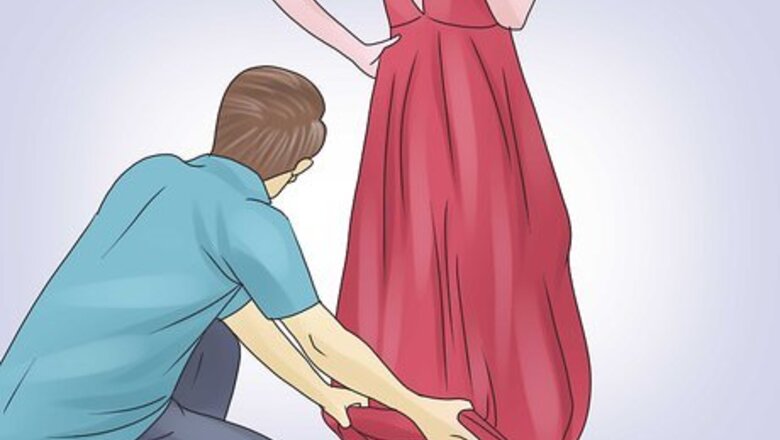
views
Making a Rolled Hem
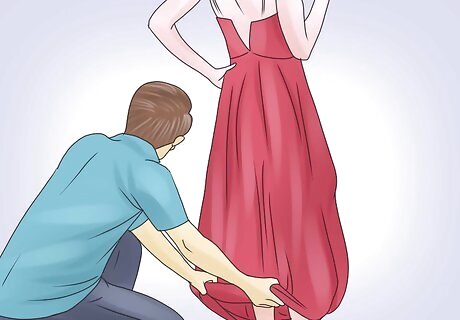
Measure and pin the new hem place. Whoever will wear the dress needs to put it on, along with their shoes. A second person should fold the bottom hem up to the desired length, folding it so that the excess fabric is on the underside of the dress. Use a ruler or measuring tape to see how much from the original hem you are going to shorten. Pin this new hem in place by sticking straight pins into the dress so the point of the pin is pushed from behind through the excess fabric, through the dress, and back into the dress and excess fabric a few centimeters away, so the pin stays in place. Pin all the way around the dress to check the new hem length. The dress wearer should always put on the shoes that they plan on wearing to prom. The height of the heel will alter the length of the new hem. To make it easier to pin the dress, have the person stand on a box, platform, or table.
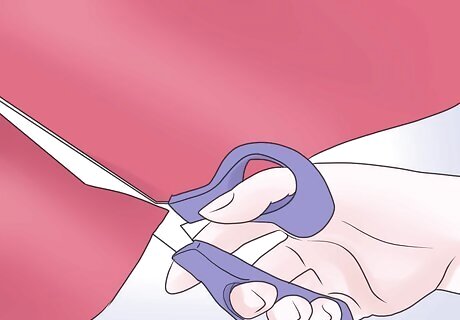
Cut off the original hem. Take a sharp pair of sewing shears and trim off the excess fabric at the bottom of the dress. You should leave about 1/4 inch (6 mm) between your new, intended hemline, and the raw, cut edge of the dress. Later, the rolled hem itself will be about 1/8 inch (3 mm). If you cannot cut off the old hem while it is pinned in place, mark the new hem with a fabric pencil and take out the pins before cutting off the excess material at the bottom of the dress.
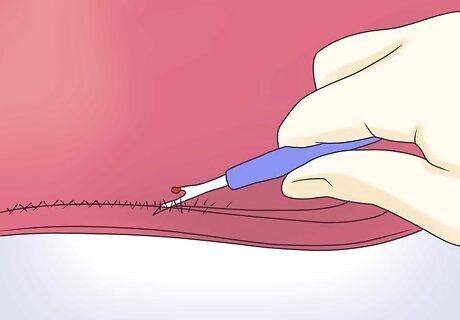
Take out the lower side seams. Use a seam ripper to remove about 1 inch (2.5 cm) of the stitches from the side seams of the dress skirt. These side seams are too bulky to feed through the rolled hem presser foot and will most likely jam up your entire machine. Save yourself the headache, and remove the side seams before making your hem.
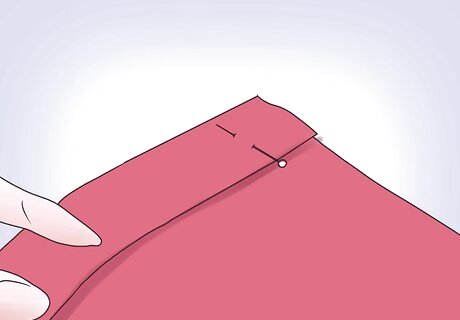
Roll a tiny hem and pin it. Use your fingers to roll a tiny hem along the bottom edge of the dress. Roll the hem so the jagged, raw edge is rolled inward and hidden. Hold down this rolled hem with your fingers, and place the hem onto the sewing machine. Carefully lower the needle into them hem, while still holding it in place. The rolled hem should to be about 1/8 inch (3 mm) thick. Roll the fabric under so that the hem is hidden on the inside of the skirt and the raw edge is hidden under the rolled fabric of the hem. The rolled hem will almost be composed to two small rolls: one to roll the raw edge in, and the end edge rolled on top of that.
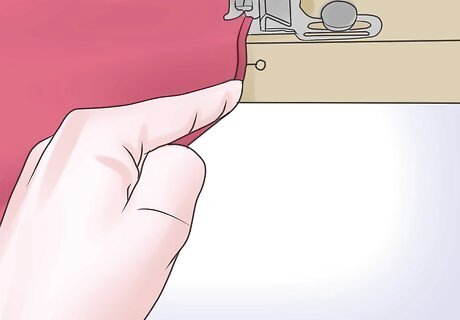
Snap the presser foot into place. You will need a specific rolled hem presser foot to make a rolled hem on the dress. Keep the sewing needle in the down position and snap the rolled hem presser foot onto your machine. Note that if you don't have a presser foot that snaps into place and you need to screw it on instead, you will need to do this before you insert the needle into your hem.
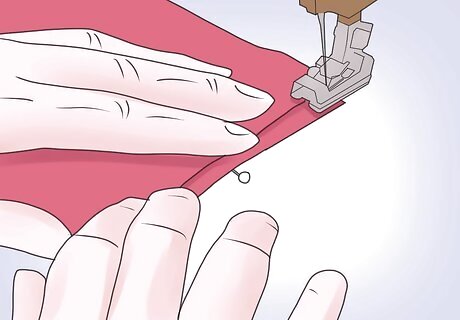
Stitch a few stitches. Choose a stitching thread that is relatively the same color as the dress. Be sure that your sewing machine settings are set to sew with a straight stitch. The outside of the fabric should be facing down, and the inside of the fabric should be facing up on the sewing machine. Slowly stitch about 3 stitches with your machine. You only need enough to get the hem started and to hold down the fold.
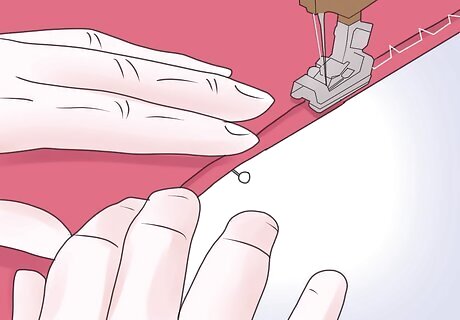
Feed the raw edge into the pressure foot. Make sure that the needle is in the down in the fabric as you adjust the fabric. Use your fingers to feed the raw edge of the material into the curved, hooked piece at the front of the presser foot. This will keep the raw edge of the hem folding as you continue to move it through the sewing machine. This curved, hooked piece will guide the raw edge and bring it under the fabric, rolling it into place as you stitch. As a result, you will not need to hand-roll the remainder of the hem; the machine should do that for you.
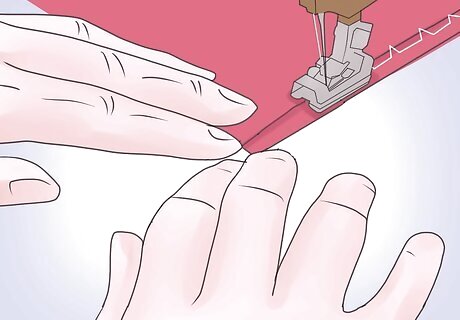
Sew along the remaining hem slowly. Continue sewing around the entire bottom hem of your dress. The presser foot should do most of the work, but use your fingers as you work to gently and slowly coax the fabric into the hooked, curved part of the presser foot. Make sure the fabric is feeding in correctly. The raw edge of the fabric should run parallel to the left edge of the presser foot, and the folded, hemmed edge should run parallel to the right edge of the of the presser foot. If working in sections (you will be if you have side seams), you will need to start the process again with each new section.
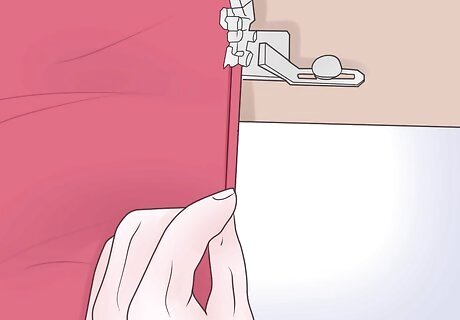
Replace the lower seams. Once the hem is done all the way around the dress, pin the side seams you took out earlier, and sew them back together with a straight stitch.

Try it on. The wearer should try the dress on to check the appearance of the new hem. With this step, the process is complete. Note that this is the recommended hemming method. Since most prom dress skirts are flared instead of straight, the material is not even all the way around the bottom. A basic hem will lead to bunching since so much material gets hemmed up. With this technique, however, you are hemming the dress using as little material as possible, so there is very little risk of bunching the fabric.
Making a Machine-Sewn Blind Hem
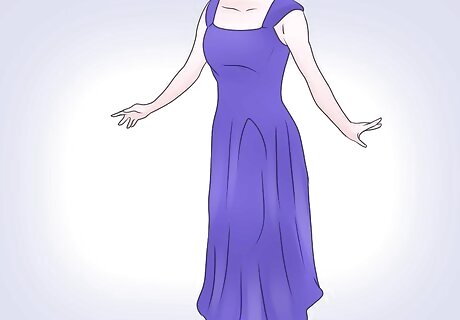
Measure the new hem and remove the old hem. The intended wearer should put the dress on while a second person measures how much of the fabric needs to be hemmed up from the bottom. Use pins to hold the newly measured hem in place, and have the dress wearing remove the dress. When the dress is taken off, cut off the excess fabric using sharp sewing shears. Leave 1 inch (2.5 cm) of excess material from the new, intended hem. The wearer should try the dress on while wearing her prom shoes. Heel height will make a difference when determining how low the hem should go. You can simply measure the length of the hem with measuring tape and cut away from there, but if you want a more even hemline, you should mark the desired hem all the way around using straight sewing pins or a fabric pencil.
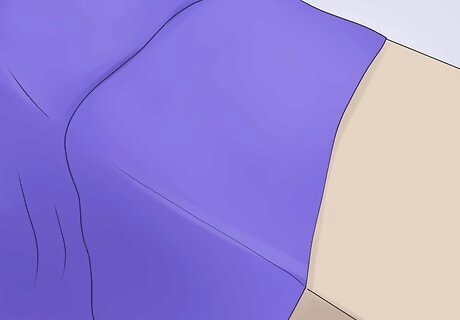
Fold and press the raw edge. Fold the raw edge at the bottom of the dress up, and inward, hiding it along the inside of the dress skirt. Say you have about 2 inches of seam allowance. You should fold up roughly 3/4 inch (2 cm) of the raw edge of the fabric. Use a hot iron to press the new crease into place. You may need to turn the skirt of the dress inside out in order to fold and press evenly. At this point, you should not put any pins in place.
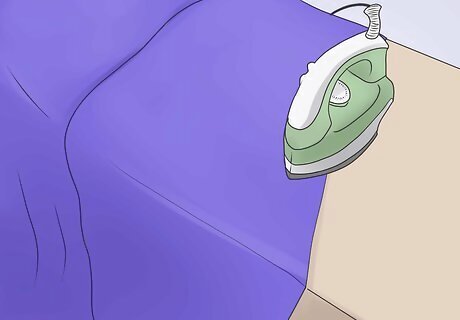
Fold and press the remaining excess. Fold up the remaining 1¼ inch (3.2 cm) of excess material in the same direction as your original fold. Press the folded edge in place with a hot iron. The raw edge you previously folded should now be hidden along the inside of the second folded edge. Once again, make sure that the folded material will be hidden along the inside of the dress. It is recommended that you pin the new hem in place at this point. Place the pins along the hem so that the tops of the pins face toward the body of the dress and away from the edge of the hem.
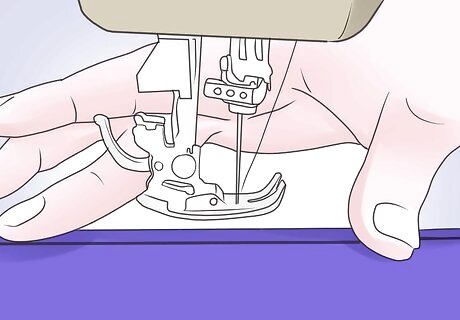
Attach a blind hem foot to your machine. Snap or screw on the blind hem foot as required for your sewing machine. This special presser foot is necessary to complete the hem on your machine. Note that your sewing machine must also be set to make a blind hem stitch. Again, refer to your machine's instructions to determine how to do this.
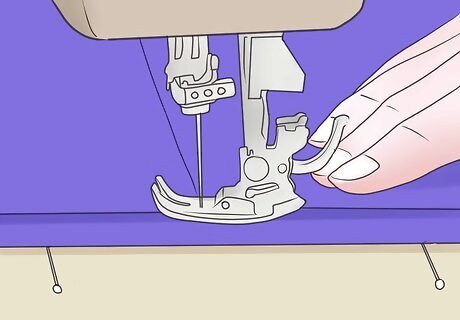
Fold the hem under as you place it on the machine. Take the dress to the machine with the fabric wrong-side-up. Flip the folded hem under the main fabric, so it's positioned just to the outside of your presser foot. With the fold hem flipped under, leave a narrow lip of the hem's edge peeking out from the side. Note that the tops of the pins will no longer be visible, but they will be facing toward the machine from underneath the fabric.
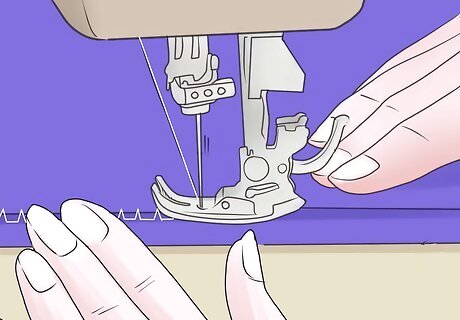
Sew along the folded edge. Be sure that you are stitching with a thread that is relatively the same color as your dress. Slide the fabric beneath the blind hem foot and place the flange (the middle section of the foot that is often darkened or colored differently to distinguish it from the rest of the foot, and acts as a guide) against this new folded edge. When the needle drops, make sure that it sews into the remaining hem edge sticking out from the side of the fabric. Sew all the way around the hem until you finish it. Most of the stitches will run along the hem's edge, and every third or fourth stitch will catch onto the main piece of fabric. Most of the stitches will go through the ¼ inch of the edge of the hem that is sticking out.
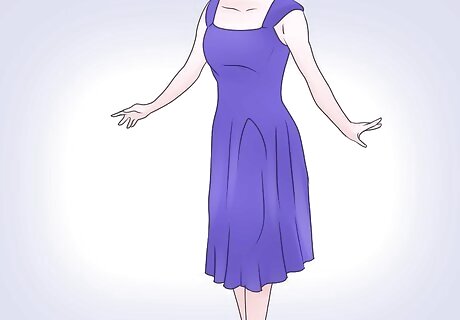
Try on the dress. When done, open the hem and straighten out the seam, gently stretching the hemmed stitches so that the material lies as flat as possible. Press with a hot iron to smooth out any creases and try the dress on to verify that the new hem looks good. This completes the process. Note that a blind hem will hide more of the thread than a standard hem will, making it a better option for prom dresses and other formal dresses than a standard hem. If the skirt flares too dramatically, though, or if you create too large of a hem, you may still notice a little bunching along the folded hem.

















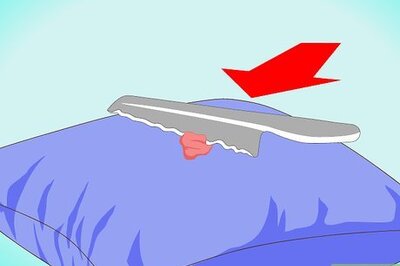

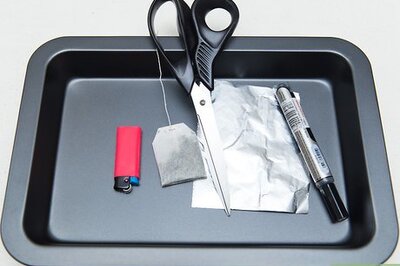
Comments
0 comment